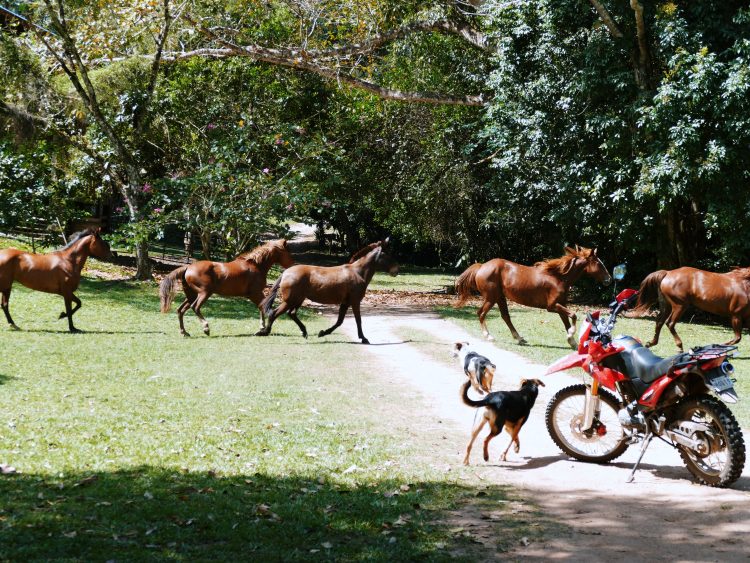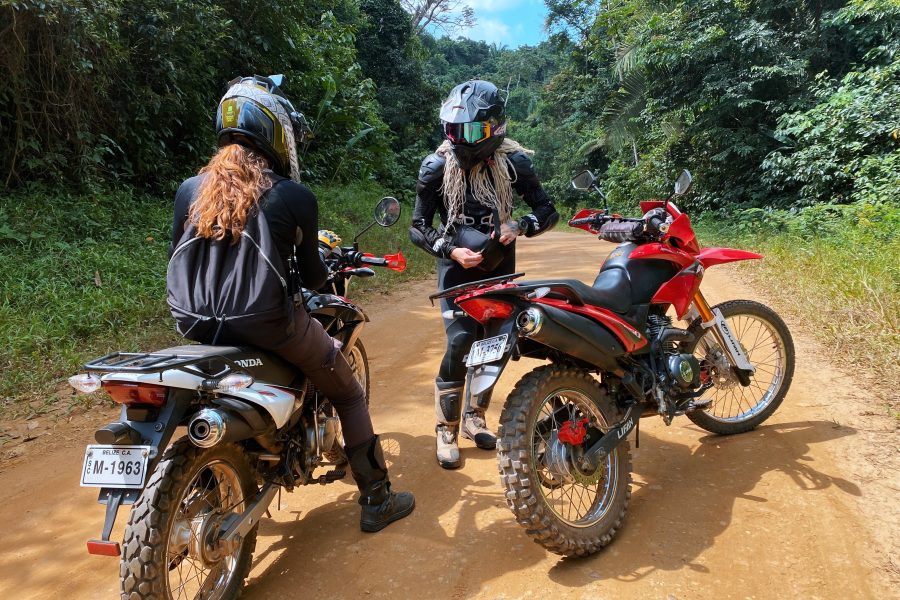Is adventure riding all about the bikes, or is it the bike that creates the adventure? In the case of Chinese motorcycles, it’s mostly the latter. But it’s not necessarily a tale of sorrows.
Way back, yours truly learned to ride motorcycles in Peru – and by motorcycles, I mean a 150cc Zongshen that looked sort of like a little Honda GL125 and worked like a tireless, if somewhat dispirited, donkey. The courageous Zongshen carried me for over 15,000 kilometers from Peru to Tierra del Fuego and back to Bolivia. How did it go? It immediately shed a few plastic bits and bobs, the dashboard refused to function in any reasonable way by about day four into the trip, the fuel range was ridiculous, and tackling the Andean routes was an odyssey in second gear at the best of times, the engine screaming and coughing, the rider lost in rhetorical musings about one’s own sanity.

Photo; Egle
The Zongshen lacked everything you expect from a fine motorcycle: the horsepower, the torque, the throttle response. It was basic, and it was not beautiful.
Still: the thing held. And it cost just a little over $1,200 brand-new. Maintenance expenses during a year of traveling amounted to a whopping $140 or thereabouts, tires could be found anywhere, and issues could be fixed by any village mechanic armed with a spoon and a piece of wire.
The Zongshen – despite its bicycle-skinny road tires – would take on the Lagunas Route in Bolivia, and nail it. At about 15 mph – but it would. It would happily putter along the Death Road, brace itself against Patagonian gale-force winds and accept being thrown about by the gusts, and when all was said and done, its little heart never gave out. I bet it’s still alive and well somewhere in La Paz to this day, having found itself a new gig as a food delivery bike or a family vehicle.
I remember it fondly.
Lifan Life in Belize
Since, I’ve moved on to a DR650, and when the day comes to get a new adventure bike, it won’t be a Zongshen. But whenever I find myself in a fly-and-ride situation, the Chinese bike idea comes back again. In most South East Asia countries, that’s all you’ll get, anyhow. The buy-back option of little Chinese bikes there is a standard. In South America, Indian Pulsar and Mexican Italika reign supreme.
苍蝇,买一个廉价的自行车,骑着它周围的计数ry, then store it somewhere for the next time, sell it back, or donate it to a local in need – it seems like a solid solution if you’re planning to ride around the world one country at a time.
Recently, I found myself scouting some routes in Belize aboard a Lifan 250cc, a thing of questionable beauty but remarkable endurance. The Lifan is like a Honda CRF, except not at all: its gear shifter can be bent with ease, it scares itself to death when forced into 95 km/h on a tarmac road, and it may, on a whim, shed the chain.

Photo: Egle
But what it lacks in horsepower and bendy shifters, it more than makes up for with its willingness to go anywhere, and forgive anything. On or off the road, the Lifan is sure-footed and stable, and it will keep on keeping on even if you’re revving it out of its mind in a muddy section or inflict undeserved abuse over rim-killing potholes. It doesn’t mind beginner riders, it bites into anything that’s ahead – a jungle trail, a rocky patch, a swamp – and it even refuses to be drowned if submerged in a creek by means of dropping the bike during a water crossing.

It’s not about the horsepower. Photo: Egle
Is it a powerful and elegant beast capable of long distances on tarmac, gnarly trails, rally-style riding, and round-the-world expeditions? No. Not quite.
But does it work for a country like Belize where off road is just, you know, road; where it’s best to always expect the unexpected, and where it can be fixed locally within fifteen minutes?
Hell yes.
The Lifan is fun to throw around, it’s perfect for short distances on sketchy trails, it works wonders for less experienced riders – there’s precisely zero chance of an accidental wheelie, even when you’re especially talented at accidental wheelies – and it’s a bike that can work as a fantastic dual sport pony when exploring a small, jungle-covered country with plenty of dirt to ride and mud to conquer.

Photo: Egle
In fact, I got so used to its lazy throttle, its honesty about what it is, and its admirable stability, that I’d consider buying one back home – should I ever acquire a home – as a fun all-rounder commuter.
There may not yet be a Chinese motorcycle capable of a round-the-world journey, but Chinese bikes are here to stay – and some of them can do pretty cool stuff, as long as you manage your expectations and your overall zen.







